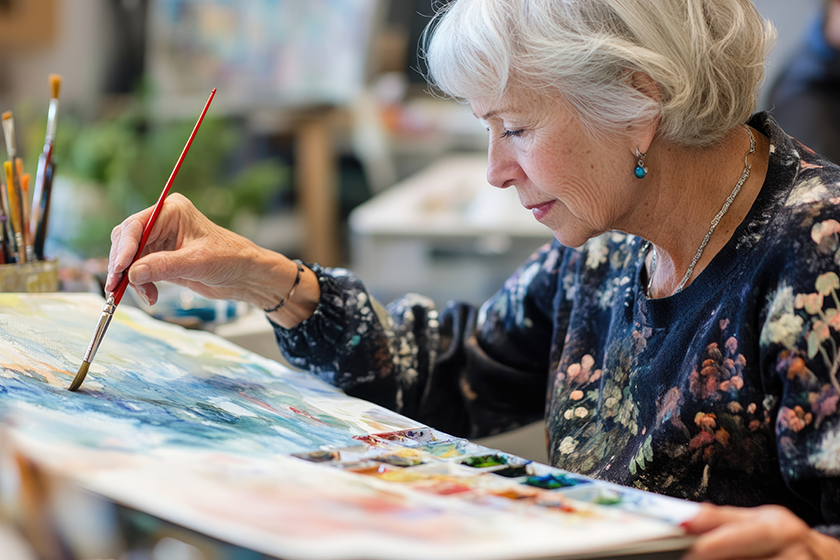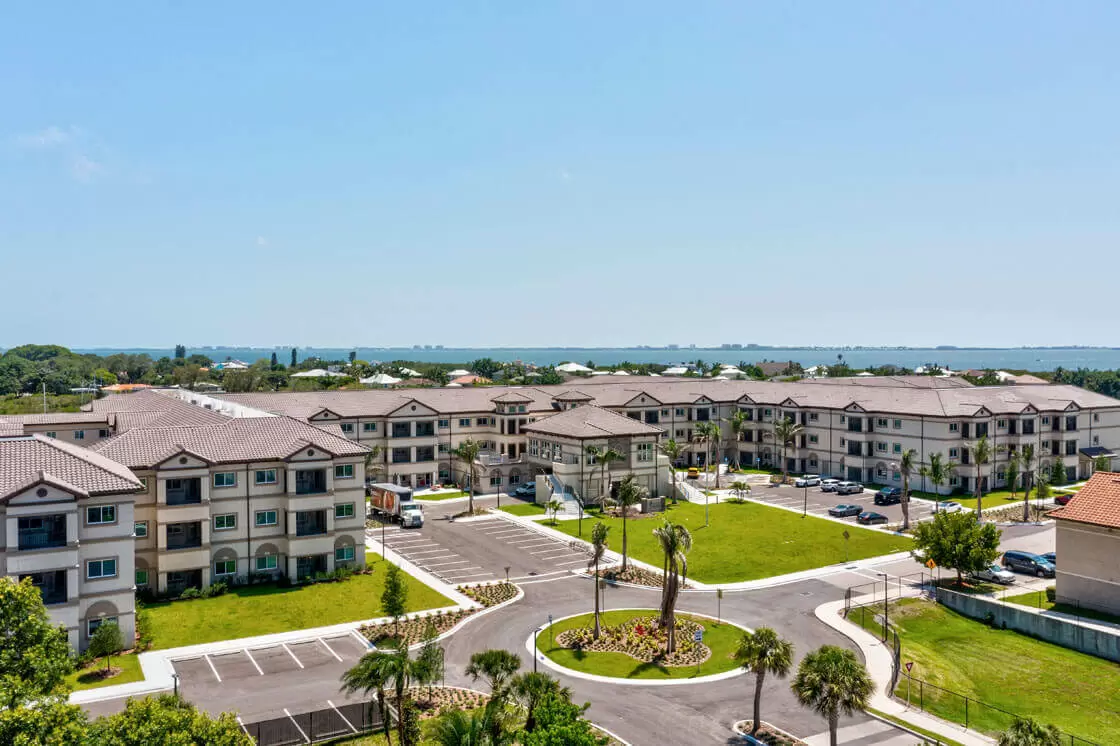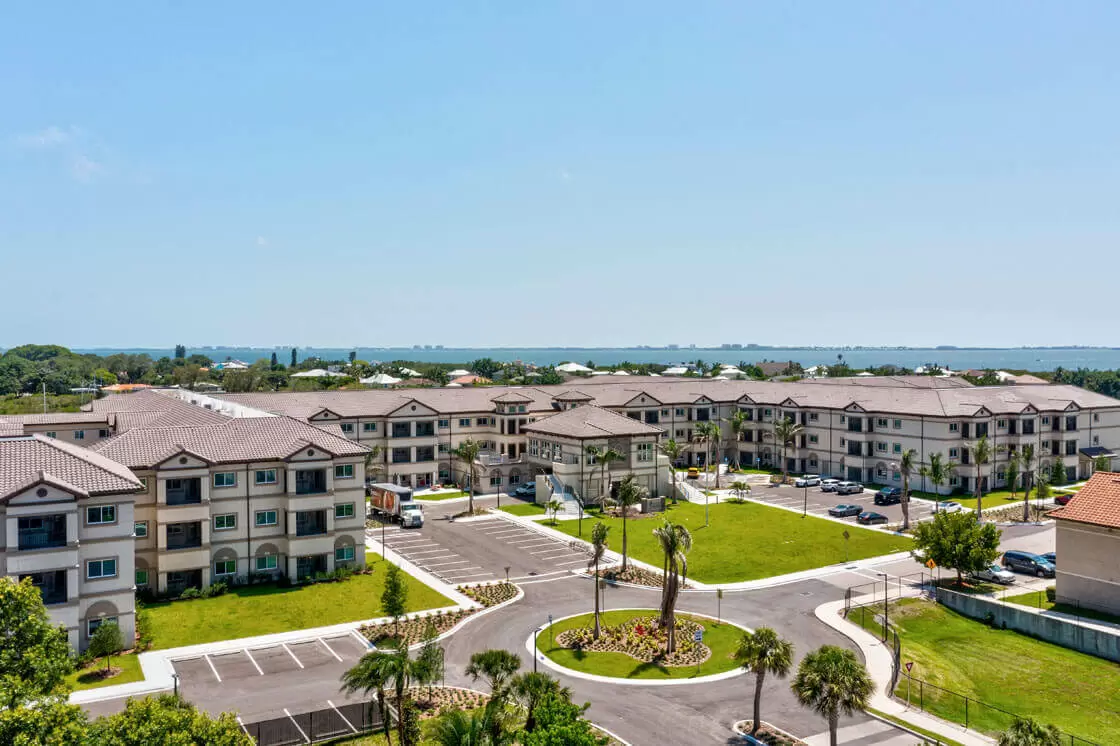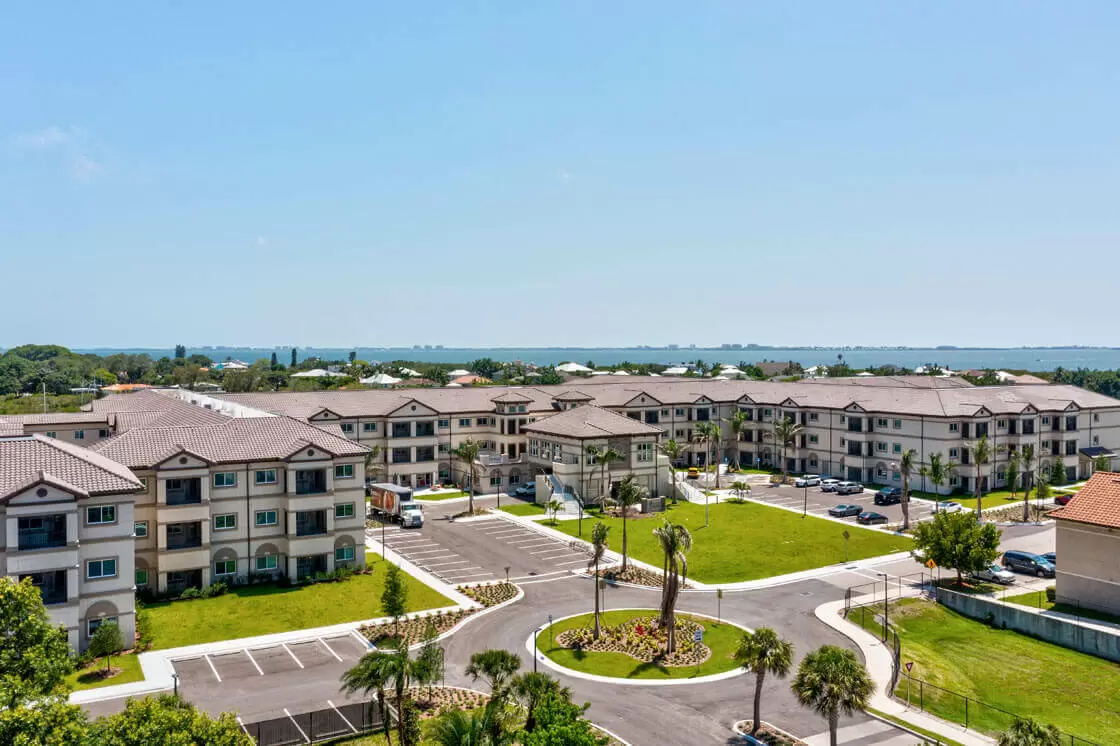How Hobbies Help Seniors Start Slow Living
Discovery Village at Sarasota Bay
For more information about the author, click to view their website: discovery village at sarasota bay
Jul 07, 2025
Florida - Sarasota, Bradenton & Charlotte Counties
Email US
Click to Email UsIn today’s fast-paced world, many older adults are finding solace in embracing a lifestyle centered around slow living. This approach involves stepping away from the rush of modern life to find a pace that promotes well-being, mindfulness and contentment.
One of the most effective ways to incorporate slow living for seniors is through hobbies. Engaging in activities that foster creativity, relaxation and joy not only enriches life but also creates an environment where stress takes a backseat.
Let’s explore how hobbies can play a pivotal role in helping older adults embrace slow living.
Hobbies Offer a Creative Outlet
For many elderly individuals, the routine of daily life can become repetitive. This leaves little room for creativity or personal expression. Hobbies like painting, knitting or writing allow you to reconnect with your passions and express yourself in meaningful ways. These activities provide a sense of accomplishment and purpose. They foster a deep sense of satisfaction that comes from making something unique.
As you begin to slow down, these creative hobbies help you channel your energy into something positive, making you feel more engaged and fulfilled. This creative outlet can also be a form of relaxation. It allows you to focus entirely on the task at hand rather than worrying about other obligations.
Physical Hobbies Promote Relaxation and Well-Being
Physical hobbies such as gardening, yoga or leisurely walks not only contribute to better physical health but also encourage a slower, more mindful pace of life.
Starting gardening projects, for example, allows you to spend time outdoors, connecting with nature while tending to plants at your own pace. This connection to nature has been shown to reduce stress and elevate mood. Therefore, it’s an excellent choice for those wanting to adopt slow living for seniors.
Gentle forms of exercise like yoga or tai chi are also great ways to stay active without overexerting yourself. These activities focus on slow, deliberate movements and breath control, which can promote relaxation and help calm the mind.
As you embrace these activities, they allow you to feel more present in your body and help reduce the anxiety that often comes with a busy lifestyle.
Hobbies Promote Social Connections
Engaging in group hobbies can help combat feelings of isolation and loneliness, which are common among the elderly. Joining a book club at your Senior Independent Living community, attending knitting circles or even participating in local hobbyist groups brings opportunities to connect with others who share similar interests. These connections are vital for creating a sense of community and belonging, which is often a challenge when living alone.
Social activities tied to hobbies also encourage conversation and the exchange of ideas. They allow you to strengthen relationships with family members, neighbors and new friends. These interactions are key to maintaining a healthy, active social life, which can have a significant impact on your overall happiness and well-being.
Hobbies Encourage Mindfulness and Stress Relief
Mindfulness—the act of being fully present in the moment—is a significant component of slow living, and hobbies are perfect tools for cultivating it. Activities such as journaling, reading or even listening to music require you to focus your attention on the task at hand, helping to quiet the mind and relieve stress. As you concentrate on something enjoyable, your worries and distractions fade away. This gives you the mental space to relax and recharge.
Mindfulness practices have been shown to lower cortisol levels, the hormone associated with stress and help promote a calmer state of mind. Through painting, knitting or practicing meditation, hobbies that focus on mindfulness can have lasting effects on mental and emotional health, supporting a more peaceful and fulfilling life.
Hobbies Bring Structure to the Day
As older adults transition into a slower-paced lifestyle, establishing routines becomes an important part of the process. Hobbies can serve as anchors in the day, offering structure and purpose to each hour.
No matter if you enjoy reading in the morning or working on a puzzle in the afternoon, incorporating these activities into your day provides a comforting rhythm. This structure helps you feel productive and gives you something to look forward to. This makes your day more enjoyable and fulfilling.
Having a set time to engage in a favorite hobby also encourages self-care. This allows you to focus on your well-being and overall happiness.
Discover Peaceful Living at Our Community
At our retirement community, we uphold the benefits of slow living for your loved ones. With a variety of amenities and services designed to support a more relaxed, fulfilling lifestyle, we help create the ideal environment for pursuing hobbies and building new routines.
From comfortable apartments to vibrant activity schedules, we encourage you or your loved ones to take things at your own pace. By engaging in a craft, participating in fitness classes or simply enjoying a quiet moment by the pool, slow living comes naturally in our community.
Ready to embrace a lifestyle full of fulfillment, peace and opportunity? Come explore how we help older adults start slow living today with a free scheduled tour.
- To view the original version of this article visit discoveryvillages.com/senior-living-blog/how-hobbies-help-seniors-start-slow-living/
- Seniors Blue Book was not involved in the creation of this content.
Other Articles You May Like
Exercise and Diabetes Considerations
Exercise offers numerous health benefits, including lowering blood pressure, managing weight, and reducing stress. Another key benefit is its role in preventing type 2 diabetes. Fortunately, exercise doesnt need to be intense or strenuous to be effective. Activities like walking, gardening, or other enjoyable forms of light exercise can be just as beneficial. However, people with diabetes should keep certain considerations in mind while exercising.Important Considerations for Exercising with Diabetes:Stay Hydrated: Proper hydration is especially important for people with diabetes, as they are more prone to dehydration. Be sure to drink water before and after exercise, and take a water break every 20 minutes during physical activity.Foot Care: Pay attention to your feet. Physical activity can sometimes lead to redness, blisters, or sores. If you notice any sores that arent healing, contact your doctor for guidance.Monitor Blood Glucose Levels: Its crucial to test your blood sugar levels before and after exercise to ensure they are within a safe range. Monitoring your glucose levels helps you understand how exercise affects your body.Consult a Healthcare Professional: Before starting any exercise program, consult a doctor or physical therapist. They can advise you on which exercises are most suitable based on your individual health status.Exercise can greatly benefit people with diabetes, but staying mindful of these key considerations will help make it both safe and effective.
Parkinsons Therapy in Florida
Parkinsons Disease is a progressive neurological disorder that affects movement and coordination. Early signs may include tremors, slowed movement, stiffness, and changes in speech or facial expression. While there is no cure, therapy can significantly improve quality of life. Physical, occupational, and speech therapy can help patients maintain independence, manage symptoms, and slow disease progression. Mind & Mobility is a leading provider of Parkinsons therapy in Florida, offering both in-home and outpatient services.Physical therapy for Parkinsons focuses on improving gait, strength, posture, and flexibility. Therapists may use exercises such as large-amplitude movement training, resistance training, and gait re-education. These interventions help reduce rigidity and improve stride length and balance.Occupational therapy supports patients in performing everyday activities like dressing, writing, and meal preparation. Therapists may recommend adaptive tools and suggest ways to modify the environment to enhance safety and ease.Speech therapy addresses soft speech (hypophonia), swallowing issues, and communication challenges. Techniques such as LSVT LOUD can improve vocal projection and clarity. Swallowing therapy helps avoid complications like aspiration. An early multidisciplinary approach is critical. The sooner therapy begins, the more effective it can be in maintaining function and independence. Regular reassessments ensure the therapy plan evolves with the patients needs. Ultimately, personalized therapy can make a powerful difference in slowing Parkinsons impact and preserving quality of life.In addition to therapy, understanding the stages of Parkinsons Disease can help patients and caregivers anticipate changes and plan accordingly. The Hoehn and Yahr scale, commonly used to classify disease progression, ranges from Stage 1 (mild symptoms affecting one side of the body) to Stage 5 (severe disability requiring full-time care). Each stage brings unique challenges, and therapy plans must evolve to meet the changing needs of the individual.Non-motor symptomssuch as sleep disturbances, constipation, depression, anxiety, and cognitive changesare also common in Parkinsons and often under-recognized. These symptoms can significantly affect quality of life, even when motor symptoms are well managed. Occupational therapists often help address fatigue, energy conservation, and task sequencing, while speech therapists may work on strategies for cognitive-communication deficits. Mental health support and regular medical follow-up are critical.Medications like levodopa remain the cornerstone of Parkinsons treatment, but they are most effective when paired with an active therapy regimen. Exercise, especially high-intensity aerobic activity, has been shown to promote neuroplasticity and may help slow the diseases progression. Programs like Rock Steady Boxing, dance therapy, and aquatic exercise have grown in popularity for their ability to combine movement with enjoyment and social interaction.Caregiver education is another essential component of treatment. Therapists can train family members and aides in safe transfer techniques, cueing strategies, and environmental modifications to prevent falls and reduce caregiver strain. Support groups also provide valuable emotional reinforcement and shared resources for both patients and caregivers.Finally, technology is playing a growing role in Parkinsons management. From smartwatches that track movement patterns to apps that guide home exercise routines, digital tools can enhance therapy compliance and symptom monitoring. Telehealth therapy services are also expanding access to care for those with limited mobility or transportation challenges.The journey with Parkinsons is different for everyone, but early intervention, personalized therapy, and a proactive care plan can dramatically improve outcomes. By integrating physical, occupational, and speech therapy from the onset, individuals with Parkinsons can extend their independence, maintain dignity, and preserve their sense of identity far longer than previously thought possible.Mind & Mobility is a leading provider of Parkinsons therapy in Florida, offering both in-home and outpatient services. With a team of expert physical, occupational, and speech therapistsincluding those certified in LSVT BIG and LOUDMind & Mobility is committed to helping individuals with Parkinsons Disease maintain independence, improve quality of life, and age with dignity. Whether you need intensive one-on-one treatment or ongoing support, Parkinsons therapy in Florida from Mind & Mobility ensures care thats compassionate, evidence-based, and tailored to your journey.
Physical Therapy For ALS: How PT Can Slow Down the Progression of ALS
How Physical Therapy Slows the Progression of ALSAmyotrophic Lateral Sclerosis (ALS), also known as Lou Gehrigs disease, is a progressive neurodegenerative condition that affects nerve cells in the brain and spinal cord. These motor neurons control voluntary muscle movement, and as they degenerate, patients gradually lose the ability to walk, speak, swallow, and eventually breathe. While ALS currently has no cure, one of the most effective ways to manage the disease and maintain quality of life is through physical therapy for ALS.The Role of Physical Therapy in ALS CareThe primary goal of physical therapy for ALS is to preserve mobility and delay the secondary effects of immobility, such as joint stiffness, muscle atrophy, and contractures. A licensed physical therapist helps patients maintain as much independence as possible by designing a personalized plan that evolves with the progression of the disease. This often includes:Range of motion exercises to maintain joint flexibilityGentle resistance training to delay muscle weakeningBalance and gait training to prevent fallsPostural adjustments and positioning techniques for comfort and safetyEarly in the disease, patients can benefit greatly from moderate activity. As ALS progresses, physical therapy shifts focus toward symptom management and maximizing safety and comfort. Its important to note that overexertion can worsen fatigue and muscle breakdown, so therapists skilled in physical therapy for ALS closely monitor activity levels and patient response.Adaptive Equipment and Assistive TechnologyAnother important component of physical therapy for ALS is identifying and introducing assistive devices at the right time. As motor function declines, mobility aids such as ankle-foot orthoses (AFOs), canes, walkers, and eventually wheelchairs become necessary. A physical therapist can evaluate the patients current needs and recommend equipment that supports function without promoting dependence prematurely.Additionally, therapists teach patients and caregivers how to safely transfer in and out of chairs, beds, and cars. Proper techniques reduce injury risk and promote confidence. Positioning aids like wedges and cushions may be recommended to prevent pressure sores and improve respiratory mechanics.Breathing and Postural SupportAs ALS progresses, respiratory muscles weaken, making breathing more difficult. Though this typically falls under respiratory therapy, physical therapists can assist by promoting postural alignment that supports better lung expansion and comfort. They may also coordinate with the rest of the healthcare team to time therapy when breathing function is at its best.Coordination with a Multidisciplinary TeamManaging ALS effectively requires a team-based approach. Physical therapy for ALS works best when integrated with occupational therapy, speech therapy, respiratory therapy, and regular physician oversight. Therapists communicate frequently to adjust care goals, track symptom changes, and ensure that treatment plans reflect the patients current abilities and desires.Occupational therapists help with upper-body tasks and fine motor coordination, while speech-language pathologists support communication and safe swallowing. Physical therapists play a central role in preserving gross motor function and preventing complications related to reduced mobility.Emotional and Caregiver SupportALS impacts more than just the patientit deeply affects families and caregivers. Physical therapists often become trusted partners in care, providing emotional encouragement alongside clinical treatment. They also teach caregivers essential skills such as safe transfers, fall prevention strategies, and body mechanics to protect their own health.As mobility declines, home safety evaluations may be performed to recommend grab bars, ramps, shower chairs, and other modifications that enable patients to continue daily routines as independently as possible.The Long-Term Value of Physical Therapy for ALSWhile physical therapy for ALS does not stop the disease, its value is undeniable. Patients who participate in therapy tend to experience slower functional decline, fewer complications, and higher satisfaction with their care. Therapy helps maintain dignity, preserve autonomy, and extend participation in meaningful activities.At every stage, physical therapy for ALS must be individualized and responsive. Regular reassessments ensure the treatment evolves with the patients needs, and even small winslike maintaining the ability to stand or shift position independentlycan make a significant difference in quality of life.
Local Services By This Author
Discovery Village at Sarasota Bay
Memory Care 1414 69th Ave. W., Bradenton, Florida, 34207At Discovery Village, we understand the challenges people with dementia face. When your loved one enters our Memory Care community, well guide and support them using a person-centered approach thats rated among the nations very best.Our SHINE Memory Care curriculum has received a National Certificate of Recognition from the Alzheimers Association, the countrys leading, voluntary health organization dedicated to Alzheimers care and research. The distinction is one that we share with a small and elite group of U.S. memory care providers. Thats proof of the quality of SHINE.Its also an approach thats unique and personalized to memory care which utilizes scientific principles to promote comprehension, lifestyle quality, and engagement for family members living with Alzheimers Disease, dementia as well as other memory-related conditions.With ongoing education and specialized training in memory care diseases that both our nurses and certified nurse assistants are currently undergoing, for each resident, they chart a course that touches upon many important aspects of life. The SHINE Memory Care program is intended to rebuild and preserve what was lost due to their affliction. From the best meals to personalized care and attention, your loved ones are in the best hands and receiving the finest quality care. You have our word, so you can rest easy.What Is the SHINE Memory Care Program?At Discovery Village At Sarasota Bay, residents will get to experience a friendly, social environment that consists of beautiful dining rooms, warm common areas, and naturally cultivate friendships in the state-of-the-art activity centers. Those with Alzheimers disease and/or dementia deserve to get both guidance and compassion and will receive the level of care they need from our Memory Care team members who are expertly trained.Our SHINE Memory Care Program provides long-term care designed to meet the needs of these residents through a supervised environment, assistance with daily living activities, and medical monitoring. Throughout the day, we also provide residents activities to enrich their lives by keeping them engaged as well as filled with purpose.There are some benefits that our memory care communities include such as the assistance of specially trained team members, the peace of mind that comes with knowing your loved one is in a safe, secure environment, and opportunities for residents to interact and socialize. If you have considered a memory care program for your loved ones, Discovery Village At Sarasota Bay offers high-quality care in our stylish, comfortable community.
Discovery Village at Sarasota Bay
Assisted Living 1414 69th Ave. W., Bradenton, Florida, 34207Discovery Village At Sarasota Bay's assisted living program is a comforting and supportive option for those seeking a bit of extra assistance with daily tasks. The assurance of help with appointments and medication management alleviates stress, allowing residents to focus on enjoying life's pleasures. Gourmet dining experiences and a calendar full of social events promise a vibrant lifestyle within the community.The dedication of the senior assisted living team to providing respectful and compassionate care ensures residents feel valued and supported. The availability of professional health and wellness staff round-the-clock reflects a commitment to meeting residents' needs at any hour. Creating an environment that families enjoy visiting speaks volumes about the warmth and welcoming atmosphere fostered within the community.It's evident that Discovery Village prioritizes not only providing essential assistance but also enhancing residents' quality of life through thoughtful amenities and convenient features. This commitment to holistic well-being makes it a standout option among senior assisted living communities in Florida.
Discovery Village at Sarasota Bay
Independent Living 1414 69th Ave. W., Bradenton, Florida, 34207Our Independent Living community at Discovery Village At Sarasota Bay sounds truly remarkable! It's exciting to hear about a community that's not only breathtaking and high-tech but also designed to meet the highest standards for amenity- and service-rich senior living. The inclusion of FlexChoice pricing makes this luxurious lifestyle more accessible to a wider range of individuals.The location of Discovery Village, just steps away from Sarasota Bay, adds to its allure, providing residents with stunning views and easy access to waterfront activities. The array of dining options and indoor/outdoor amenities promise an enriching and vibrant lifestyle. FitCamp sounds like an innovative approach to seniors' health and fitness, offering opportunities for residents to stay active and engaged.Moreover, the attentive concierge service reflects a commitment to providing personalized care and support to residents. The convenience of complimentary, scheduled transportation allows residents to explore and enjoy all that the Sarasota area has to offer, from its renowned beaches to its thriving arts and culture scene, golf courses, fishing spots, and more.Discovery Village At Sarasota Bay seems to offer a resort-style living experience that combines luxury, convenience, and excitement, making it an ideal choice for independent seniors looking to embrace a vibrant and fulfilling lifestyle.



